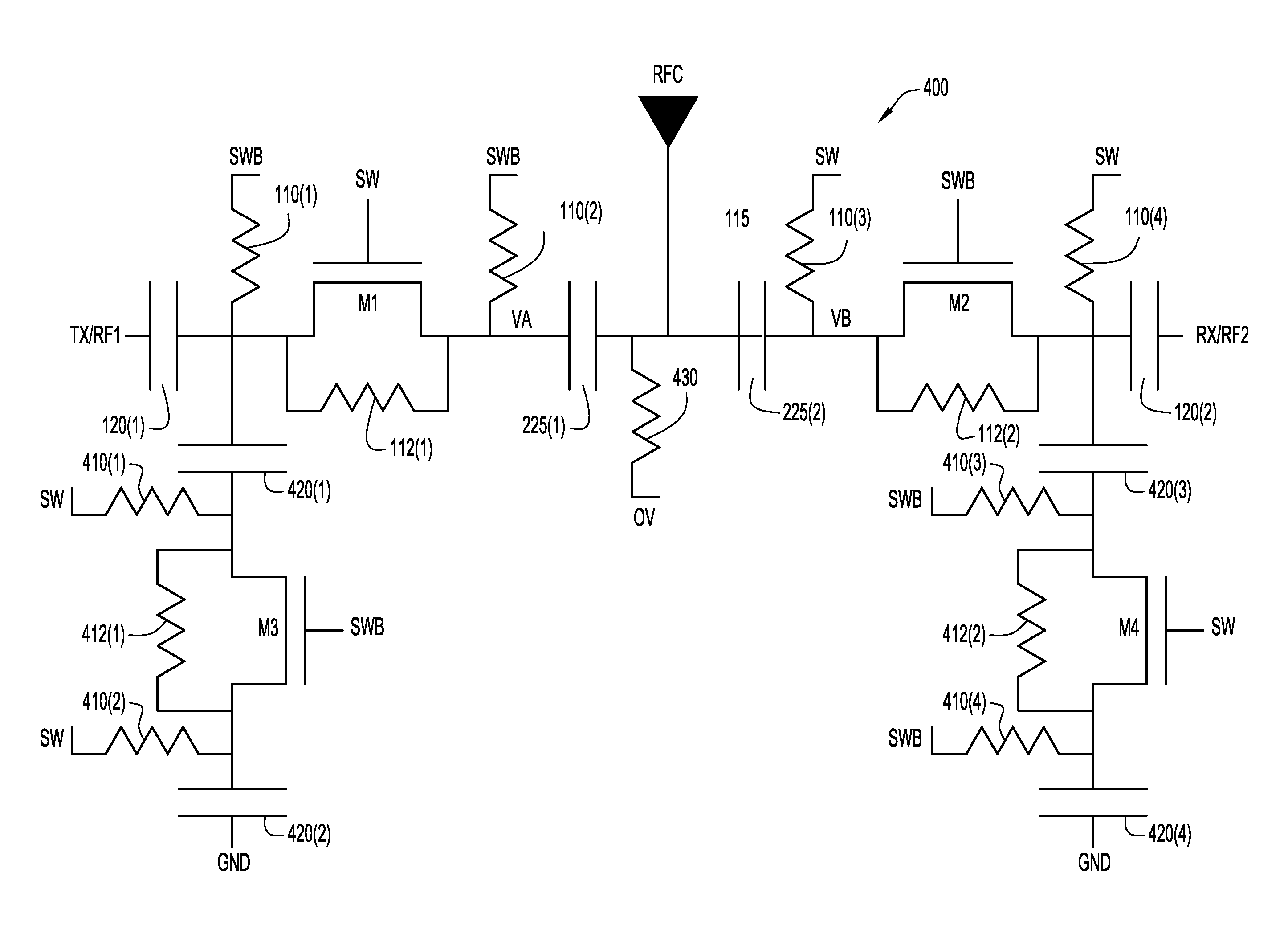RF Switch with Adaptive Drain and Source Voltage
a technology of source voltage and rf switch, which is applied in the direction of electronic switching, electrical equipment, pulse technique, etc., can solve the problems of destroying the switching capability of rf switch, the inability of rf switch to isolate one path from the other, etc., and achieves the effect of increasing the permissible input signal amplitude and reducing the transient switching time of rf switch
- Summary
- Abstract
- Description
- Claims
- Application Information
AI Technical Summary
Benefits of technology
Problems solved by technology
Method used
Image
Examples
Embodiment Construction
[0015]Reference is now made to FIG. 1, which depicts a conventional RF switch 100. RF switch 100 includes an RFC (radio frequency common) port, a first port RF1 and a second port RF2. A first semiconductor switching element M1 is disposed between RFC and first port RF1, and a second semiconductor switching element M2 is disposed between RFC and second port RF2. M1 and M2 may be, for example, MOSFET devices having respective source nodes (VS1, VS2), drain nodes (VD1, VD2) and gate control nodes (105(1), 105(2)). Although MOSFET devices are described herein as the semiconductor switching elements, the switching elements may alternatively comprise bipolar transistors among other semiconductor switching elements.
[0016]Resistors 110(1)-110(4) are connected to each of the source and drain nodes, and a bias voltage VBIAS is applied to the respective source and drain nodes. As will be explained below, VBIAS is a constant voltage, the application of which enables RF switch 100 to accommodate...
PUM
 Login to View More
Login to View More Abstract
Description
Claims
Application Information
 Login to View More
Login to View More - R&D
- Intellectual Property
- Life Sciences
- Materials
- Tech Scout
- Unparalleled Data Quality
- Higher Quality Content
- 60% Fewer Hallucinations
Browse by: Latest US Patents, China's latest patents, Technical Efficacy Thesaurus, Application Domain, Technology Topic, Popular Technical Reports.
© 2025 PatSnap. All rights reserved.Legal|Privacy policy|Modern Slavery Act Transparency Statement|Sitemap|About US| Contact US: help@patsnap.com



